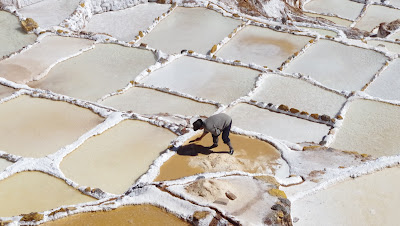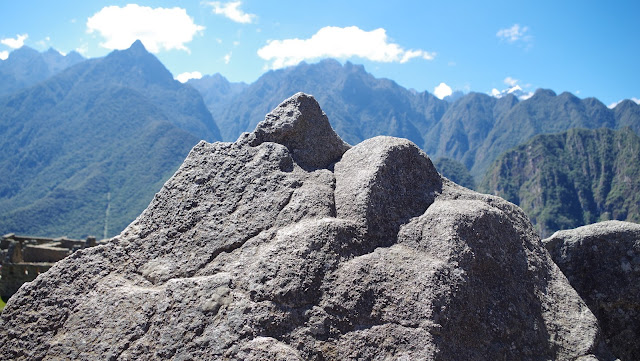I would
like to start by expressing how much I miss everyone back home.
(insert
long pause here)
But really.
This trip would not be possible without the love and support of my dear friends
and family. I cant explain how hard it is to be away from all of you.
Especially now. Here is why:
A few weeks ago (I don’t really know which day because I don’t even know what day today is.. Im
on Amazonian time) we boarded a bus. We had a few issues with sick-folk along
the way and a few of our students had to head home (miss you Cody and
Lauren!) then, we took a 12 hour bus
ride to Puerto Maldonado.
The drive
(for the daylight portion) was beautiful. Incredible. We drove over the Andes. Really, the Andes!
15, 000 ft elevation, surrounded by glaciers, strange vegetation and llamas.
Some of us experienced a little altitude sickness from making such a steep
climb in only a few hours. I was included in that. Mostly my eyes would not
stay open and I would drift in and out of sleep.
 |
| the drive over the pass |
 |
| the Andes |
The trip
was way too long thanks to our driver being extra cautious on the Peruvian
hiway. We made a stop in a very VERY small town to use the restroom. Walking into the nearest restaurant we asked
to use the facilities. This one room restaurant was only a few long tables with
a plastic cover and a television that was turned up full blast. There were two
men eating and some children playing in the dark outside. The lady working
there pointed outside and around back and we all followed the pointing.
Around the
corner were 6 outdoor stalls. They were labeled baño 1, baño 2 and so
forth. The first two were stopped up.
Number four’s light was out and five and six were holes in the ground. Looks
like number 3 for me. After beating that
challenge we boarded up the bus again for another few hours.
We arrived
in Puerto Maldonado around 1 am and headed to bed. The next morning I had to
make a pharmacy run because I was feeling less than “Heidi” so I got some
supplements to make my heart sing. I wish I could describe properly Puerto
Maldonado but try to imagine a Peruvian palm tree biker town where they use
motorcycles as taxis, the women all dress very nicely and wear high-heals on
their scooters, and the humidity is like nothing you can imagine. The thick
sticky kind that makes you want to shower every 10 minutes. We didn’t spend a
lot of time there but it felt like some post apoctolyptic city where civilization
was rebuilding and had limited fuel resources so everyone had a motorcycle.
A six
seater taxi showed up at our hotel doorstep and we loaded up and headed out for
the hour drive to the boat port. The
town we ended at was a small mining village. The town was fairly sketchy but
incredibly interesting. The open businesses were either convenience stores or
boat/motorcycle repair shops. The town people were not incredibly used to
tourists/out-of-towners so we had to be a little more guarded. I had to use the
bathroom (this seems to be a trend) and I walked to the nearby gas station. I
asked the young man working if I could use the bathroom. I was really nervous
because we were told to just “be careful” in the town. He said “yeah” and he
pointed. There were three stalls. I opened the door and found a fairly dirty
and unusable toilet. He came running over and told me to use the one marked
“privado.” This one really wasn’t much better. The place was a germ sanctuary.
I still used it. Then headed out to strike up a conversation with the guy. We
talked for a bit and he asked me where I was from. I told him “the states.” He
said “ahhhh like Nueva York??” I
chuckled and told him ‘the other side.’
Then I found out that he knows the University of Washington and I was really
impressed. I told him thank you so much for letting me use his restroom and I
headed out.
Also, I
would like to mention I successfully peed in a hole (in a “bathroom stall” in
this town for 2 soles.
One of our
boats broke down before we boarded…. Sooooo we were able to borrow a supply
boat that was lined with mattresses at the bottom for us to sit on. When I say
boat, I hope you understand this was no cruise liner. This boat mimics a large
canoe with a canopy. One man sits at the back with a motor and controls the
boat. Seven of us fit on the mattresses and strapped on our life vests ready
for the ride of a lifetime down the Madre de Dios river.
 |
| laberinto |
 |
| my professor Ursula getting our boat packed up |
 |
| some of the jungle view from the river |
Madre de
dios.
The water
was a murky brown red color from its decent from the Andes large intrepid
watershed. Dotted along the river, gold mines past and present, impacted the
banks of the river like cancer. The mines were continuous and slowly moving
more into the landscape, clearing trees, killing wildlife and vegetation, and
polluting the river. A very dangerous
bi-product of the gold mining process is mercury.
 |
| a rainstorm while we were on the river(complete with thunder and lightning) |
 |
| the after product of the rainstorm |
 |
| the sunset on the river |
Gold mining
in the Amazon has become a huge environmental issue as well as social hazard.
Children are being taken from their homes to do the most dangerous work in the
process- the diving. Aside from that people are dipping their entire bodies in
containers with mercury in them.
We arrived
at CICRA, a biological station for conservation. You can read more about it here: http://www.amazonconservation.org/ourwork/research.html
We loaded
our luggage up a thousand stairs (well not so much but it may as well have been
a thousand) and headed to our cabin. Our cabin was a large building with
ceilingless rooms, no electricity, and no hot water. Im not complaining. It
definetly built character.
First thing
I noticed stepping into the Amazon was the amount of insects:
HUGE
secadas
HUGE moths
Our rooms
were nice for being in the jungle, but going to sleep was difficult. We did not
have windows, only screens for windows, so all of the noises of the jungle
creeped into our room all night. We slept under mosquito nets and listened to
all the insects out side. Definitely a new experience for me.
 |
| los amigos station eating hall |
 |
| my mosquito netted bed |
The week at
CICRA
 |
| melastomatacea leaf |
We spent
every day trekking thru the jungle, setting plots and counting plants. Our hikes would last up to four hours
sometimes, which gave us ample opportunity to see all the wild life.
Here are
some of the animals we saw:
Capuchin
monkeys
Squirrel
monkeys
Emperor
tamerine monkey
Orpendula
Black
vultures
Turkey
vultures
Egeret (all
three kinds)
Anolis
Gigantic
roaches
Huge
secadas
Tucans
Maccaws
Royal
flycatchers
Giant
turtle
Cayman
(crocodile)
Roadside
hawks
Ready Quail
Dove
Orb weaving
spiders
Praying
mantis
Gecko
Athena
Spider
Morpho
Butterflies
Phylomedusa
Frog
Bats
Crazy
catapillars
Bullet ants
Also we
saw/heard:
Peckarys
(wild pigs)
Jaguar
tracks
Matapalo
tree (crazy huge strangler tree)
 |
| lake edge where we searched for giant otters |
 |
| animal trap I found deep in the rainforest |
 |
| capuchin monkeys outside our cabin |
 At one
point we had 20 squirrel monkeys swinging over head. Another point I watched 5 shooting stars from
a lookout over the Madre de dios river.
At one
point we had 20 squirrel monkeys swinging over head. Another point I watched 5 shooting stars from
a lookout over the Madre de dios river.  |
| my poor feet |
I got a
super awesome opportunity to help my good friend Alyssa Boettger with her
birding project. She set up nets at 5 a.m. and waited in half hour increments
to see what she could catch. Then she measured and banded each bird and then
let it go. She did this repeatedly for a few days and recorded all of her data into a global birding site. My friends are so cool.
One of the
most interesting things was the fact that we were neighboring non-contacted
villages. Indigenous Peruvians that have never seen a white girl from the U.S.
We were told to stay away from these areas because there have been attacks on
researchers in the past, rare, but it could happen. I partially wanted to run
into them because of my extreme interest in ancient cultures.
 After 8
days of the jungle, we headed back to a relaxing evening in Puerto Maldonado,
then headed back to Cusco the next morning.
After 8
days of the jungle, we headed back to a relaxing evening in Puerto Maldonado,
then headed back to Cusco the next morning. My experience in the Peruvian rainforest was something unforgettable. Really difficult and lonesome at times, and completely phenomenal at others. I was challenged in unimaginable ways and came out a better student and a stronger woman.















































































































































